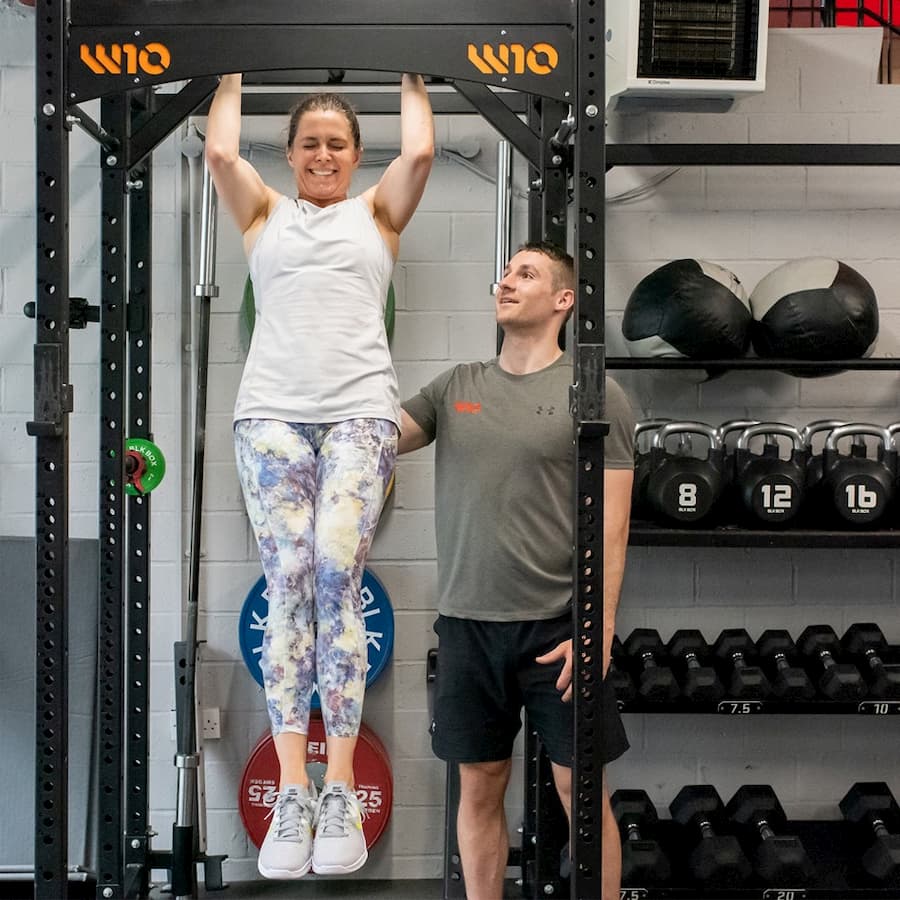
Categories
9 Tips to Improving Your Chin Ups
The chin up is sometimes called the squat of the upper body, implying that if they can be performed well, we should tap in and do lots of them.
The problem is that, similar to the squat, many people can’t perform a chin up well, or cannot perform a chin up at all.
Females will generally find chin ups harder as typically have less relative strength, that is strength relative to their bodyweight, and often their weight distribution is different to that of men.
For the purposes of this post we are only going to cover the dead hang, or strict, variation of the chin up, not the kipping version sometimes used by crossfitters and gymnasts.
Chin Up Tips
Here are a few methods that will help you increase the amount of chin ups you can do or get to the point where you can tick off that elusive first chin up.
- More Frequency:
Starting with the obvious. If you want to get better at something you need to do more of it. Add a max set of chin ups as part of the end of your warm up every time you are in the gym. Either that or perform as many reps as possible in a time period e.g 10 minutes instead of simply 3 sets of x. This is known as EDT. - Slow Down The Eccentric:
Eccentric means the lowering phase and is the strongest of the three muscle contractions. If you can already perform chin ups slow down the eccentric portion of the lift and on the last rep go as slow as possible. If you cannot perform a bodyweight chin up, renowned strength coach Charles Poliquin, has a theory that once you can do one 30 second eccentric chin up at a steady speed you should be able to perform 1 full chin. - Be Strict With Form:
This may sound obvious when talking about a ‘strict’ chin up, but you don’t want your legs flailing all over the place. Nor do you want to be curling yourself over the bar at all costs. To fully activate the upper back you need to keep your chest up at the top of the rep. - Weak Point Training:
This is where bicep curls may be useful when it comes to performance and not just aesthetics. The biceps play a big role in chin up strength and theoretically may have more of a carryover than exercises such as lat pulldowns. If the upper back is weak address that with band work and facepulls etc. Grip strength can also be a weak point for some. - Address Mobility:
You may be lacking the mobility to get in the correct position at the top. Common problem areas are shoulder mobility, scapular control and thoracic (upper back) mobility. - Use Of Bands:
Resistance bands are a great way of allowing people who cant perform chins to do them in correct form without creating bad movement patterns by cheating. They provide more help at the bottom, which is the hardest part of the movement, and less at the top. - Lose Weight:
As I mentioned above chin ups are a matter of relative strength therefore you don’t have to have a masters in physics to realise that the lighter you are the easier they will become. - Clusters:
Use small intra set pauses known as clusters. Say you are trying to get 6 reps, but fatigue after 4. Perform 3 and rest for 20 seconds before performing the second 3. - Use External Load:
If you can perform 10 bodyweight chin ups its time to start weighting them for lower reps. This will allow you to tap into higher threshold muscle fibres and you will see strength gains.
Hopefully there is plenty of food for thought there and it has inspired some of you to improve your chin up performance or tick off that very first full bodyweight chin up.
If you have any questions on the above or would like some advice on how we could help you with your fitness goal, don’t hesitate, visit our gym in Vauxhall and try one of our personal training sessions.
Related Articles
- How to Increase Chin Up Strength
- How to do Your First Full Body Chin Up
- Why You Should Aim to Get your First Strict Chin Up
- 7 More Tips To Improve Your Chin Ups
- The Surprising Benefits of Strength Training


